Engineers usually have access to signal and function generators, as well as frequency counters and oscilloscopes, but they may not have access to capacitance or inductance meters. Using the test setup in Figure 1, you can measure capacitance or inductance using a function generator, a multimeter, a frequency counter, and an oscilloscope.
 |
||
| Figure 1. | You can measure capacitance or inductance with this test setup. | |
Use the setup to measure the magnitude of two signals. You can then calculate the capacitance or inductance without measuring phase angles. You can express the ratio of input voltage to output voltage as:
 |
(1) |
which you can put into the standard form:
 |
(2) |
After solving the equation for XC, the result is:
 |
(3) |
Using the relationship
 |
(4) |
the basic equation for capacitance is:
 |
(5) |
Using the convenient ratio |VIN/VOUT|=2, then
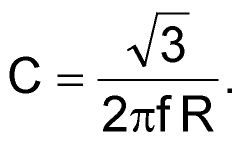 |
(6) |
To measure the value of a capacitor, measure the input voltage and then adjust the frequency of the signal generator to make the output voltage one-half of the input voltage. You need not use a 2-to-1 ratio for VIN/VOUT. You can just measure the input voltage and the output voltage and use one of the basic equations to calculate the value of the capacitance or inductance, but a ratio close to 2-to-1 is a good choice.
For best results, you can use a frequency counter to measure the frequency and a digital multimeter to measure the resistance. Most modern oscilloscopes can accurately measure the signals without loading the circuit, except for the capacitance of the probe. Capacitance is usually marked on the probe. Use the previous equation to calculate the value of the capacitor. Subtract the value of the probe capacitance from the result, and you have an accurate value for the measured capacitance.
Usually, you know the approximate value of the capacitance you want to measure, so you can pick a starting value for the resistance, R, and the frequency, f, by using the following equations:
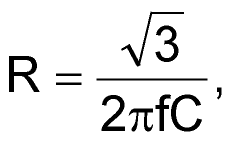 |
(7) |
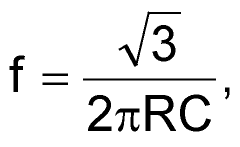 |
(8) |
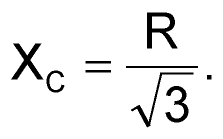 |
(9) |
You can use a similar procedure to measure inductance. In this case,
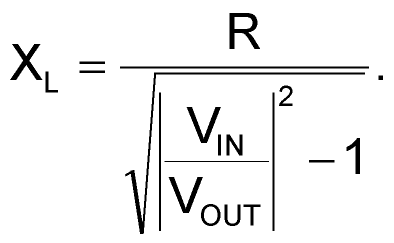 |
(10) |
and the basic equation for inductance is expressed as:
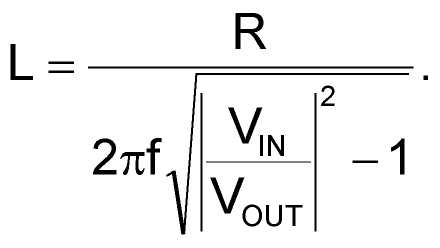 |
(11) |
Set VIN/VOUT=2, then
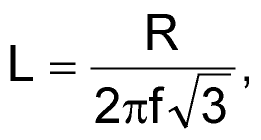 |
(12) |
 |
(13) |
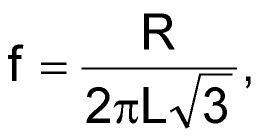 |
(14) |
and
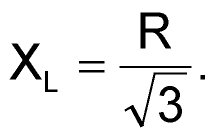 |
(15) |
For an example of measuring capacitance, assume C is approximately equal to 1000 pF and let f equal 1 MHz. Calculate as:
 |
(16) |
Use a 301 Ω resistor or any convenient value of approximately 250 to 500 Ω in the setup of Figure 1. Adjust the frequency while measuring the input voltage and the output voltage to get a ratio of 2-to-1. If the frequency you obtain is 912 kHz, the measured resistance of R is 304 Ω, and the probe capacitance is 10 pF, then the capacitance is:
 |
(17) |
minus 10 pF for the probe capacitance. The result is 984.3 pF.
The values for R and f are not critical; you should choose them to minimize parasitic effects. Resistance values of 300 to 3000 Ω and frequencies of 100 kHz to 1 MHz should work.